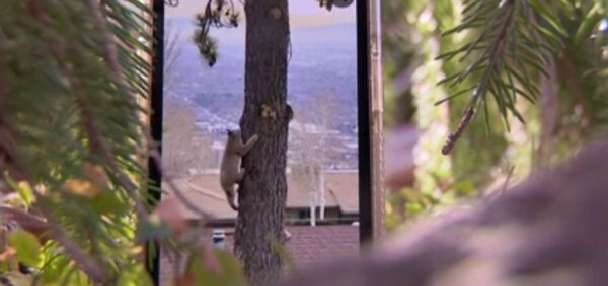Estimated read time: 5-6 minutes
This archived news story is available only for your personal, non-commercial use. Information in the story may be outdated or superseded by additional information. Reading or replaying the story in its archived form does not constitute a republication of the story.
By ADAM NOSSITER
Associated Press Writer
NEW ORLEANS (AP) - New Orleans awaited the reopening of the airport and the waterfront Tuesday for the first time since Hurricane Katrina hit, and the coroner planned autopsies on at least 44 patients found dead at a flooded-out hospital.
The new acting director of the Federal Emergency Management Agency pledged to intensify efforts to find more permanent housing for the tens of thousands of Katrina survivors now in shelters.
"We're going to get people out of the shelters. We're going to move on and get them the help they need," R. David Paulison said in his first public comments since he was named to replace Michael Brown. Brown resigned under fire over the government's sluggish response to the disaster.
The exact number of bodies recovered Sunday from the 317-bed Memorial Medical Center was unclear. A state official said the corpses of 45 patients were found; a hospital administrator said there were 44, plus three on the grounds.
The discovery raised Louisiana's official death toll to nearly 280.
It was not immediately clear how the patients died.
Dave Goodson, an assistant administrator at Memorial Medical, said patients died while waiting to be evacuated after Katrina struck, as temperatures inside the hospital reached 106 degrees. He said the heat probably contributed to some of the deaths.
Family members and nurses were "literally standing over the patients, fanning them," he said.
However, Steven Campanini, a spokesman for hospital owner Tenet Healthcare Corp., said some of the patients had died and were in the morgue before Katrina arrived, and none of the deaths resulted from lack of food, water or electricity to power medical equipment.
Dr. Frank Minyard, the Orleans Parish coroner, said autopsies will be performed on the bodies.
During an appearance Tuesday on NBC's "Today," he said he thought the evacuation of the city was successful, considering how the death toll so far was much lower than expected. However, he noted that searches continued.
"There just may be a lot of people who are still down in those deep waters, and some of waters were 10, 12, 15 feet deep," Minyard said. "My biggest fear is that we will find something down there that is way out of proportion. Hopefully, it doesn't happen, but we worry."
Also Tuesday, Louis Armstrong New Orleans International Airport was scheduled to receive its first commercial flight since Katrina struck on Aug. 29.
The port of New Orleans expected its first cargo ship since the hurricane late Tuesday and expected at least three more ships by the week's end, said Gary LaGrange, port president and chief executive. The arriving ship was carrying up to 500 containers of coffee and wood products from Argentina, Brazil and Mexico, LaGrange said.
A shipment of steel coils was leaving the port Tuesday bound for a Hyundai auto plant in Greenville, Ala., he said.
"It's a historical moment. Two weeks ago the prognosis was six months, so to pull it off so our customers have enough faith and confidence in us is very heartwarming," LaGrange said.
He added: "From a commercial and psychological standpoint, this is five stars. This shows the people of New Orleans their city is back in business."
The port of New Orleans is the gateway to a river system serving 33 states along the Mississippi River or its tributaries. The port also connects to six railroads.
While public health authorities have been warning about the risk of germs from the filthy floodwaters, workers from the Centers for Disease Control and Prevention are not seeing many cases of disease.
Instead, between 40 percent and 50 percent of patients seeking emergency care have injuries _ CDC has counted 148 injuries in just the past two days, Carol Rubin, an agency hurricane-relief specialist. She said they include chainsaw injuries and carbon monoxide poisoning from generators.
President Bush got his first up-close look at the destruction in New Orleans on Monday.
"My impression of New Orleans is this: that there is a recovery on the way," Bush said after riding through New Orleans in a truck with the governor and mayor.
The recovery was visible in spots Monday. Nearly two-thirds of southeastern Louisiana's water treatment plants were up and running, and 41 of New Orleans' 174 permanent pumps were operational. Officials expect the still half-flooded city to be completely drained by Oct. 8.
Business owners were let back into New Orleans on Monday to assess the damage and retrieve vital records and equipment.
John Baus, a lawyer and construction manager, filled his SUV with computer servers, monitors, fax machines and crates of files. He said he planned to make the best of the disaster, starting a new company to help residents handle disaster claims and rebuilding projects.
"Everybody's been scattered to the four winds," said Baus, who evacuated to Baton Rouge. "How are they going to take care of insurance claims? Meet contractors? Get their houses restored the way they were?"
Some homes will require rebuilding. St. Bernard Parish President Henry Rodriguez told displaced residents there is not a structure left standing in Hopedale, southeast of New Orleans. Parish Councilman Craig Taffaro said no one should expect to live in the parish again before next summer; before Katrina, its population was 66,000.
Sgt. John Zeller, a California National Guard engineer, said it will be at least three months before the New Orleans' public water system is fully operational. Some homes have running water now, but it is mostly untreated Mississippi River water _ for anyone wanting a bath, "It's like jumping in the river right now," he said.
Some of those displaced may end up in temporary housing provided by FEMA, which expects to use trailer homes to create "temporary cities," where some 200,000 hurricane victims _ most of them in Louisiana _ could live for up to five years.
"This may not be quite on the scale of building the pyramids, but it's close," said Brad Fair, head of the FEMA's housing effort.
In other developments:
_ Lawmakers in Washington proposed some tax changes Monday to help storm victims, such as letting them tap retirement accounts without penalty and encouraging donations of cash, food and school books.
_ Former New Orleans Mayor Marc Morial called for a compensation fund for the hurricane victims similar to the fund created for victims of the terrorist attacks of Sept. 11, 2001.
___
Associated Press writers Erin McClam, Mary Foster and Lisa Meyer contributed to this report.
(Copyright 2005 The Associated Press. All rights reserved. This material may not be published, broadcast, rewritten or redistributed.)









